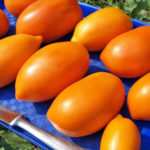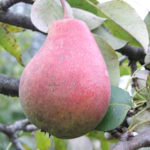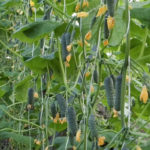Lemon variety New Zealand
The New Zealand lemon is widespread in citrus collections. Its description can be found in many sources, but, oddly enough, they tell almost nothing about either the origin of the variety or the origin of its name.
Information that wanders from directory to directory claims that it has a long-standing origin. It originated as a natural hybrid between lemon and citron. The similarity with citron is so obvious that we will recall it more than once in this description.
Of course, the name of the citrus is associated with the island of the same name. But it is noteworthy that it is practically not cultivated on modern plantations of New Zealand, and it is not observed in the local wild nature.
Interesting! On foreign English-language sites, there is practically no information about this kind of lemon. Apparently, the reason is that, based on its hybrid nature, New Zealand belongs to the group of so-called "fake lemons" (it is quite extensive). Even Russian-language sources sometimes refer it to the group of "citron-like citruses".
Description of the variety
Features of the crown... In nature, a tree can grow up to 4 meters, at home it is much lower. However, New Zealand is one of the larger, vigorous varieties. For this reason, and also because of the low quality of the fruit (which we will talk about below), it is used mainly as an ornamental plant for landscaping. It is beneficial to keep it in hallways and spacious offices.
Castings are large, on average about 7 - 9 cm long, but there are also more. Their shape is characterized as "broadly ovate", "broadly oval". The edges of the leaves have small denticles, the top almost always ends with a small pointed. The leaves have such a strong smell that you can hear it from a distance - for this, the leaf does not even need to be rubbed with your fingers.
The leaves are attached to narrow, long lionfish, which also indicates a close relationship with citron. This is also evidenced by the presence on the branches of a large number of large, up to 5 cm, thorns. The shoots themselves are strong, strong, they are characterized by slight ribbing in the section.
This lemon is able to withstand fairly low temperatures, down to minus 5 ° C. But this only applies to growing outdoors!
Description of flowers... When characterizing them, they usually first of all distinguish a large size, up to 6 cm in diameter, which is not surprising, given the "citron" nature of the variety. The color of the buds, as well as the petals on the outside, is characterized as "anthocyanin". This term, which is far from being understood by everyone, can be replaced by phrases: "light eggplant", "blue-violet". Inside the flower is white, it has a strong aroma, graceful shape.
Flowers on a tree tend to be located singly or in small inflorescences, 2-3 pieces each.
Fruit... They are large, like flowers. The New Zealand fruit is one of the largest lemons in the world. Their average weight reaches 600 - 800 grams, but there are specimens up to a kilogram and more. Other features of the fruit:
- The shape is cylindrical, irregular, often ovoid.
- The surface is very hilly, reminiscent of citron, slightly oily to the touch.
- The skin is thick, can reach one centimeter in thickness, poorly separated from the pulp. Such properties reduce the commercial value of the variety. And in home citrus growing, its fruits are not popular. As already noted, this variety is valuable precisely for its decorative effect.
- There is a wide nipple at the tip of the fetus.
- The pulp is loose, rich in juice, but too sour, low-aromatic. The fruit usually contains several seeds, most often 4.
- Skin color - from orange to light yellow.The color of the pulp is slightly grayish, like that of grapefruit and citron.
We got acquainted with an interesting, somewhat mysterious variety, worthy of becoming an adornment of any citrus collection!








